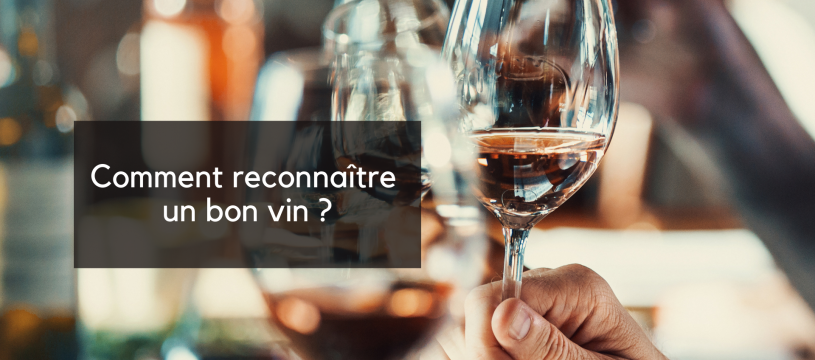
How to recognize a good wine?
Did you know that?
The tasting of a wine takes place in 3 stages: observe it, smell it, taste it.
THE NOSE
Pour a little wine into a glass and inhale. This is called "the first nose".
If the wine is "open", you will be able to distinguish the fragrances it gives off (floral, mineral, vegetable, spicy, fruity, etc.).
On the other hand, if it is "closed" and you can't smell anything, you should let it settle and air out before tasting it.
THE VISUAL ASPECT
The colour of the wine is also an excellent indicator. A good wine usually has a bright, intense colour.
The colour is also an indication of the age of the wine.
- For red wines: the more orange-red the colour, the older the vintage; a purple colour indicates a young vintage.
- For white wines: the older the wine, the more golden it will become.
However, this is only a general statement, as the colour of a wine also depends on the grape variety or varieties used.
TASTE BALANCE
When tasting, the balance in the mouth must be present.
- For a white wine, the balance lies between two axes: acidity and smoothness.
- For a red wine, there are three: acidity, smoothness and tannin. It is important to know that smoothness is the ratio between sugar and alcohol.
Taste balance is the first component to know how to choose a good wine, but it is not the only one: the olfactory persistence also comes into play.
THE LENGTH IN THE MOUTH
A good wine is also measured by its length in the mouth. This is the time during which the aromas remain in the mouth after spitting out.
This olfactory persistence lies in the quality of the fruit itself. The quantity of aromas perceived and their intensity depend on several factors, but the quality of the grape used and its ripeness remain the main elements.
In addition, the wine tasting experience also depends on the temperature at which it is served.
Therefore, be sure to follow the recommendations made by the wine merchant or indicated on the wine bottle.







